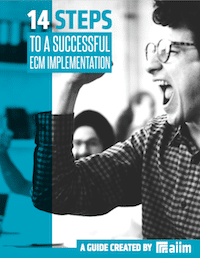The AIIM Blog
Keep your finger on the pulse of Intelligent Information Management with industry news, trends, and best practices.
Whether you are new to production scanning, or have been involved for many years, it’s tempting to believe that scanners have become a “commodity”—that most scanners are very much alike in design and functionality, and that choosing a scanning platform is no longer a critical decision when compared, for example, to the decision related to your capture or ECM software. Nothing could be further from the truth. Don’t shortchange the evaluation and choice of a scanner. The device you choose will be with you for many years and will be responsible for accurately capturing your paper documents efficiently and effectively. The following eight factors will help you think about just how different scanning platforms can be. Consider your business needs carefully before choosing the device that is right for you—you’ll be happy that you did!
Share
Intelligent Information Management (IIM)
AIIM recently published an article called "Eight Factors to Consider In Creating an Information Management Strategy." The article included eight questions to ask yourself about the people, processes, and technology that will be affected by your information management strategy. Here are eight more factors you should consider when creating an information management strategy: 1. Talk to Your Employees Technology decisions have traditionally been handed down from the top, forced on employees along with a training manual and a help desk number. But there’s a fundamental difference between giving your employees technology that they have to use and giving them the technology they want to use. Before you formulate your information management strategy, consider talking with your employees. Do they feel enabled—or disabled—by technology? Chances are, they have some pretty valuable insights into what isn’t working, and maybe even some technology recommendations. Individuals and departments often find creative ways to work around cumbersome infrastructure and platforms, implementing wikis, extranets, and cloud content management platforms to manage better and share information. Take a look at the organic processes your employees have put in place and the solutions they’ve adopted—if they’re working, why not consider broader deployment?
Share

Making an ECM implementation successful requires planning and attention to detail. The best way to create the right solution is to identify organizational goals and priorities. Learn how to manage a successful implementation in our free guide.
Intelligent Information Management (IIM)
The chief executive officer (CEO) and the chief counsel walk into your office (you know, the office where your RIM certifications and all the accolades from AIIM and ARMA are hanging on the walls). They tell you that litigation costs are out of control, information management practices are constantly showing up in audit findings, and the acquisition of the firm’s biggest competitor is in full swing and will be finalized by the end of the month. They want to know what you’re going to do about it, and they want to know now. Before drafting your resignation letter, take a deep breath and remember that all those hours studying, and learning information management concepts, trudging through exam preparation, and earning all of those continuing education credits have prepared you for this task. As a wise person once said, you eat an 800-pound stack of paper, CDs, DVDs, USB storage media, hard drives, and electrons one bite at a time.
Share
So, you’ve just deployed your brand-new collaboration app and you’re looking forward to using it to improve your efficiency and productivity as you work with your colleagues on different projects. But hold on! How you use the application dictates your likelihood of success. You have to be aware that no matter how many features collaboration products possess (e.g., blogs, wikis, document libraries, etc.) they are only useful when properly adopted by the enterprise. This article outlines eight tactics that can drastically improve your overall productivity when using collaborative apps.
Share
Organizations often make big plans to get users on-board and excited about their new SharePoint intranet after it launches. They have an office pizza party to announce the new intranet, set everyone’s browser to default to the SharePoint site, or run contests on the site and award prizes for those who visit. While these tactics may work to some degree, the problem is that each one treats user adoption as an afterthought. With many organizations planning to re-launch their SharePoint sites on 2010, or first embarking on a SharePoint project now that 2010 has arrived, it’s time to put user adoption strategies where they belong: at the start of the project. To maximize user adoption of your new intranet, here are the top 8 strategies to consider for your project.
Share
1. Easy to Use Interface When building a strategy for a successful electronic document management solution—as with any significant change to the way business is done within your organization—user acceptance is crucial. The simplest way to minimize the impact of a new solution is to make it as easy and familiar to use as possible. When reviewing different vendors, be sure to have the eventual users as part of the review process. Apart from getting the features users need, how quickly do they understand the layout? Is the interface easy to understand? Does it look like standard applications they are using on a daily basis (such as Microsoft Office), or is it completely different? Is the interface customizable so the users don’t suffer confusion from features they don’t need to use? Would the casual user have much difficulty in remembering how to use it? If the answers are “no,” then the success of your implementation is in jeopardy.
Share